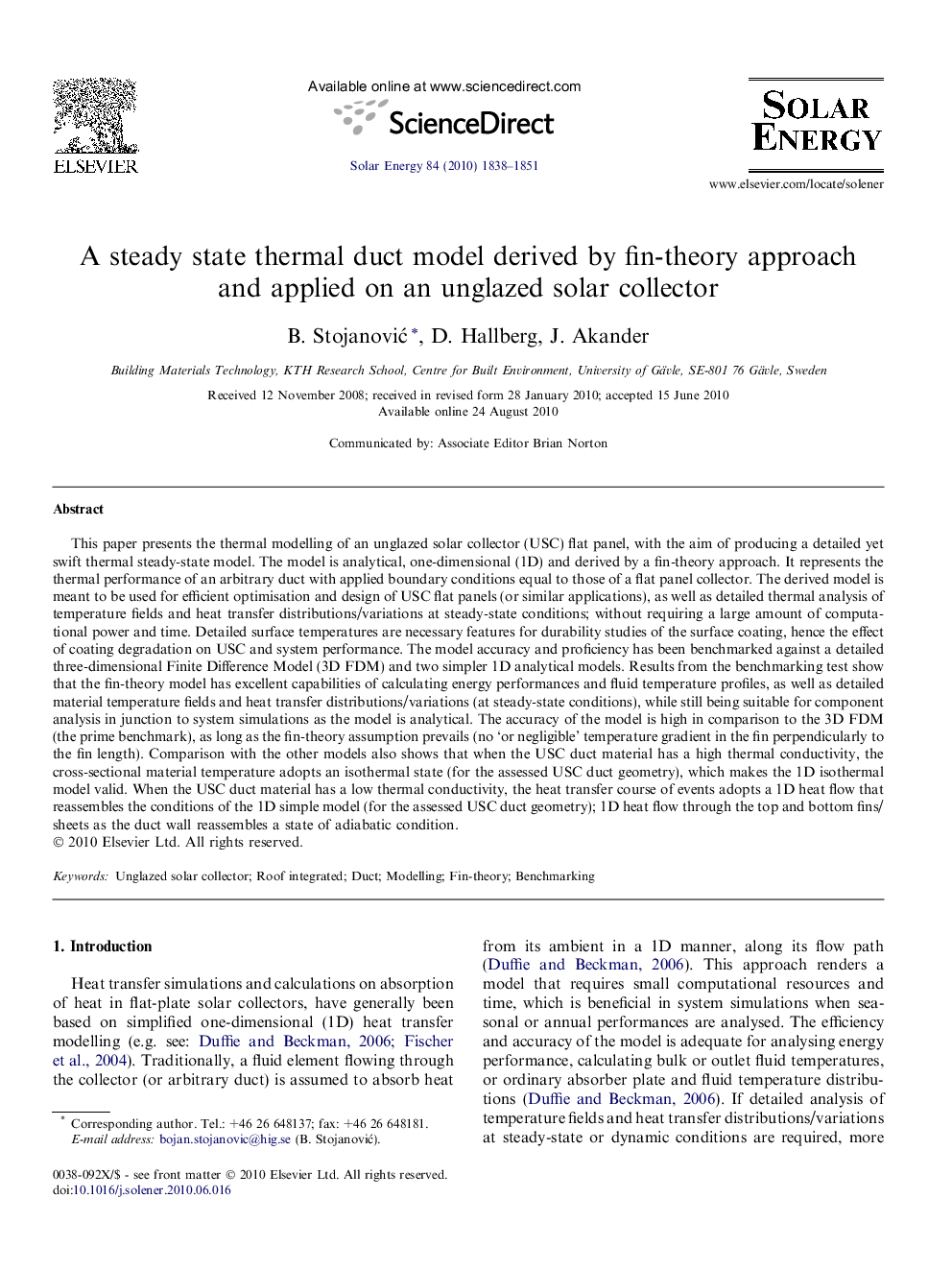| کد مقاله | کد نشریه | سال انتشار | مقاله انگلیسی | نسخه تمام متن |
|---|---|---|---|---|
| 1551526 | 998136 | 2010 | 14 صفحه PDF | دانلود رایگان |

This paper presents the thermal modelling of an unglazed solar collector (USC) flat panel, with the aim of producing a detailed yet swift thermal steady-state model. The model is analytical, one-dimensional (1D) and derived by a fin-theory approach. It represents the thermal performance of an arbitrary duct with applied boundary conditions equal to those of a flat panel collector. The derived model is meant to be used for efficient optimisation and design of USC flat panels (or similar applications), as well as detailed thermal analysis of temperature fields and heat transfer distributions/variations at steady-state conditions; without requiring a large amount of computational power and time. Detailed surface temperatures are necessary features for durability studies of the surface coating, hence the effect of coating degradation on USC and system performance. The model accuracy and proficiency has been benchmarked against a detailed three-dimensional Finite Difference Model (3D FDM) and two simpler 1D analytical models. Results from the benchmarking test show that the fin-theory model has excellent capabilities of calculating energy performances and fluid temperature profiles, as well as detailed material temperature fields and heat transfer distributions/variations (at steady-state conditions), while still being suitable for component analysis in junction to system simulations as the model is analytical. The accuracy of the model is high in comparison to the 3D FDM (the prime benchmark), as long as the fin-theory assumption prevails (no ‘or negligible’ temperature gradient in the fin perpendicularly to the fin length). Comparison with the other models also shows that when the USC duct material has a high thermal conductivity, the cross-sectional material temperature adopts an isothermal state (for the assessed USC duct geometry), which makes the 1D isothermal model valid. When the USC duct material has a low thermal conductivity, the heat transfer course of events adopts a 1D heat flow that reassembles the conditions of the 1D simple model (for the assessed USC duct geometry); 1D heat flow through the top and bottom fins/sheets as the duct wall reassembles a state of adiabatic condition.
Journal: Solar Energy - Volume 84, Issue 10, October 2010, Pages 1838–1851